Eight first ascents and four seconds in the remote Tien Shan mountains of Kyrgyzstan. EXPLORATORY mountaineering at its best.
Read the trip report by Tim Howell of the Jöttnar Pro Team.
DAY 1
We drove for five hours over rough tracks, through rivers and over makeshift bridges, heading deeper into the valleys of Kyrgyzstan’s Tien Shan mountains. Each valley led to another, branching off again and again until finally a wide river stood between us and our base camp. We had driven hundreds of kilometres, but as the crow flies we were only 50km from our hostel.
The Kamaz 4x4 had left at 4am this morning, aiming to reach this glacial outflow as early as possible in order to cross it. Our driver surveyed the banks, looking for an opportunity to cross. Lurching forward down into the murky river the water rose above the huge tyres before crawling out the other side and into the alpine meadow that would be our home for the next two weeks.
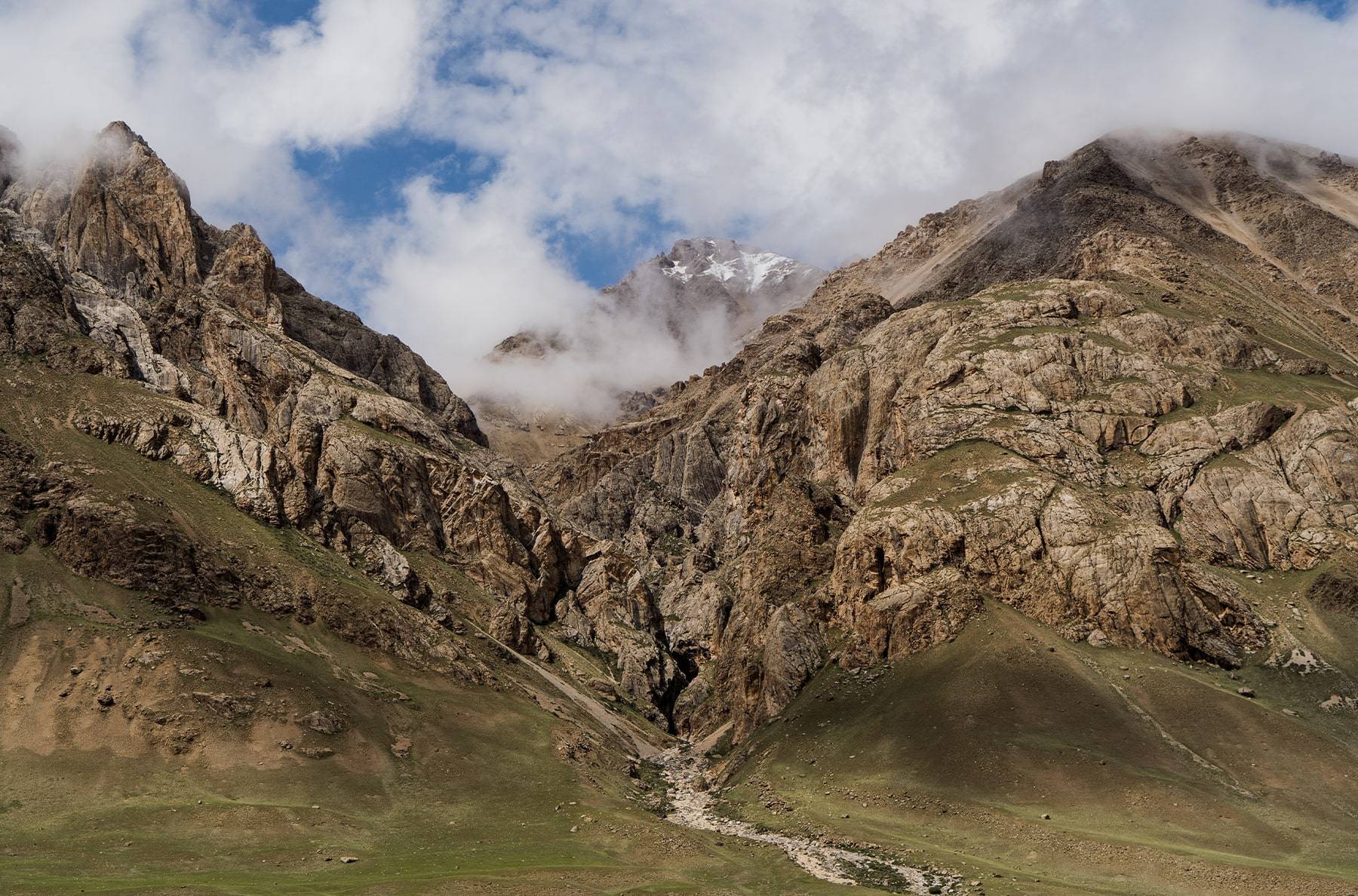
I had never experienced exploratory mountaineering before. It had always been daunting prospect. I wanted to make sure I had enough experience to make the most of any unclimbed mountains before an opportunity arose. The Tien Shan is ideal for this sort of expedition. There are hundreds of valleys each with handfuls of unclimbed peaks and each mountain with plenty of route options. A lot of the routes can be simple mountaineering, but of course you can choose a line more demanding and direct. Although a lot of these peaks can be easily climbed, it’s important not to underestimate the experience needed to climb them safely.
Our team of nine spent the morning setting up base camp. Necessities such as sourcing water and setting up the filtration system, putting up our mess tent and digging a latrine. And then the personal touches like clothes lines, solar panels as well as the marital quarters for my wife Ewa and I. We sat in the meadow and studied our proposed route, using old Soviet maps as well as modern 3D counterparts on our phones. There was a good weather window on the horizon and Ewa and I planned to make the most of it. We were pre-acclimatised from climbing in the Swiss Alps so we decided to make the hike to advanced base camp that afternoon.
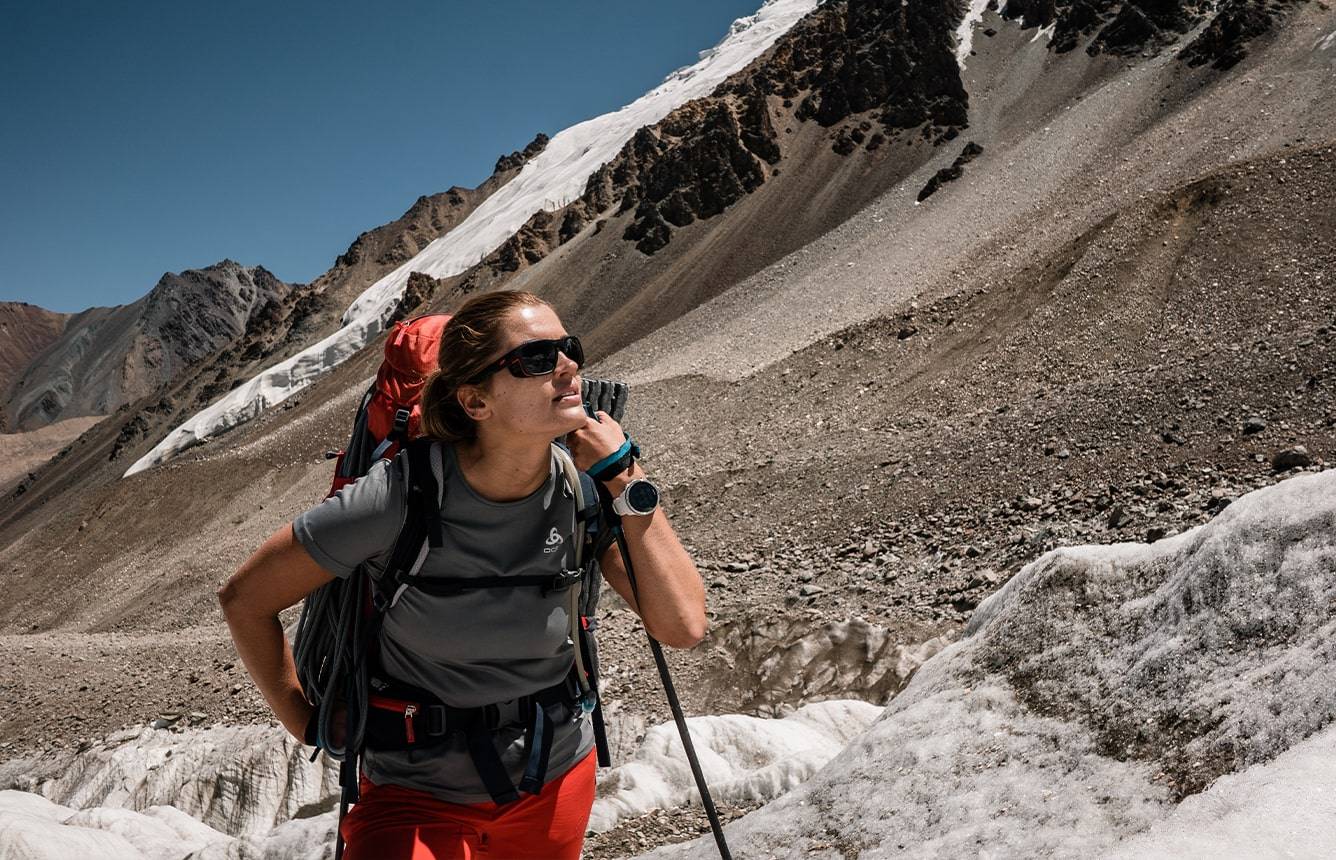

We felt confident with our route and objective. The exploratory nature of this expedition was so different to how we normally operate in the Alps. No condition updates, route reports, GPS files or digital topos of the climbing route. We didn’t know what gear we would need, what type of climbing we would encounter. We relied on experience and skill to climb the unknown.
DAY 2
In the morning we navigated the seracs at the bottom of our objective’s north face. The snow was hard and compact underfoot, a good sign for the imposing 200m wall in front of us. The gradient started at around 45 degrees, increasing a bit in the middle before relaxing at the top. The frozen snow wouldn’t hold ice screws, yet we roped up and climbed together, hoping to find some ice. We were unable to protect or rest on the steep face, so took a short breather on the west ridge, straddling the snow, one half of us in the sun and the other in the shadow of the north face. We refueled and headed west to the summit, taking on one false summit after another.
Standing on the summit we took in the view - a perspective no other human had seen before. I felt privileged to stand where no-one else had ventured before, but the unique view was our reward for the climb. A huge sense of accomplishment overwhelmed me. It wasn’t just the achievement, but about doing it together, with my wife. We looked across the valley; it offered an insight into potential routes on two other 5,000m+ mountains. This would be invaluable first-hand information for the coming days.
The others within the team were also successful in ticking off another 4,000m peak in the area. Back at base camp we shared our findings; possible routes and objective dangers like areas of high crevasses or seracs. We lapped up the information, ready to return to our new objectives after a rest day or two.



DAY 4
Our water barrel was filled up daily. Each morning we would take the small goat track to the water's edge. It was clearest in the morning when the river was placid and the glacial silt hadn’t been disturbed by the daily ebb and flow of the meltwater up above.
The weather report came in each day at 3am, giving us the chance to begin planning our next objective. The two 5,000m peaks that we’d seen from our summit a few days ago looked a lot more complex to climb, with an aesthetic couloir leading to a higher plateau and hopefully onto the peak. This would be our next objective.
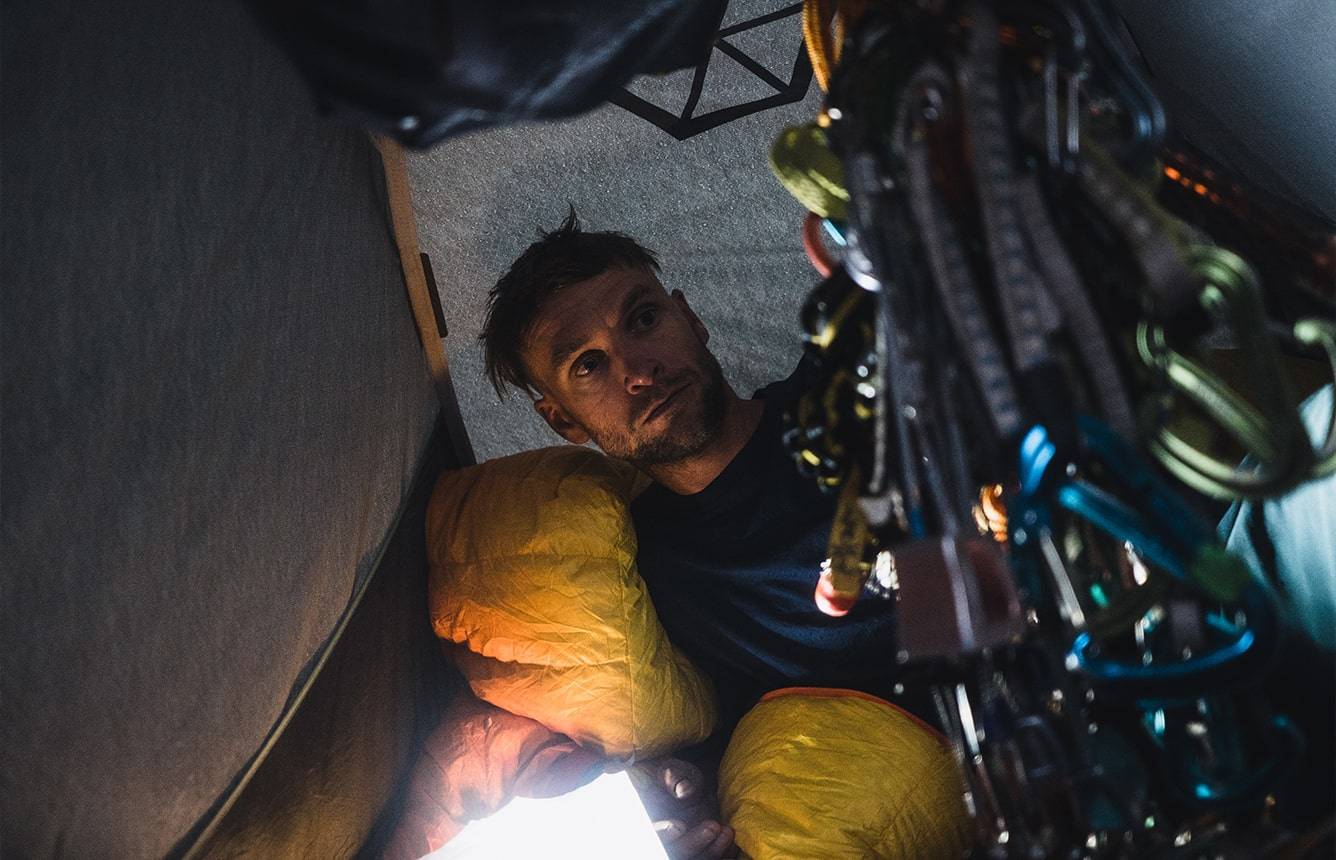

DAY 5
We gathered our gear and made the slow walk up to advanced base camp. The walk was tiresome; river crossings and undulating ground broken by hundreds of marmot holes. As the clouds grew dark, Ewa and I placed our tiny tent at the foot of the glacier. Not as close to the climb as we wanted, but at least it meant we could go light and fast in the morning and leave our bivvy kit behind. It also meant we could get the weather report from the team bivvying up in the tent beside us. Only our axes and walking poles stayed outside the tent. Everything else came inside despite the lack of room. Our climbing hardware hung from the roof, a rope divided our roll matt and our boots acted as pillows.
The familiar sound of water drops on taught fabric tapped away, picking up pace until a frenzy of rain battered our tent. It was unrelenting and lasted right up until our 2.30am alarm. The fresh snow on the hill would hinder our climbing and so we opted to head back down to the base camp. In the following days the bad weather slowed down our momentum. We needed a hot spell and some wind to climb safely in the mountains again. The surrounding peaks around our basecamp were now frosted with snow and we knew the higher peaks would be challenging.
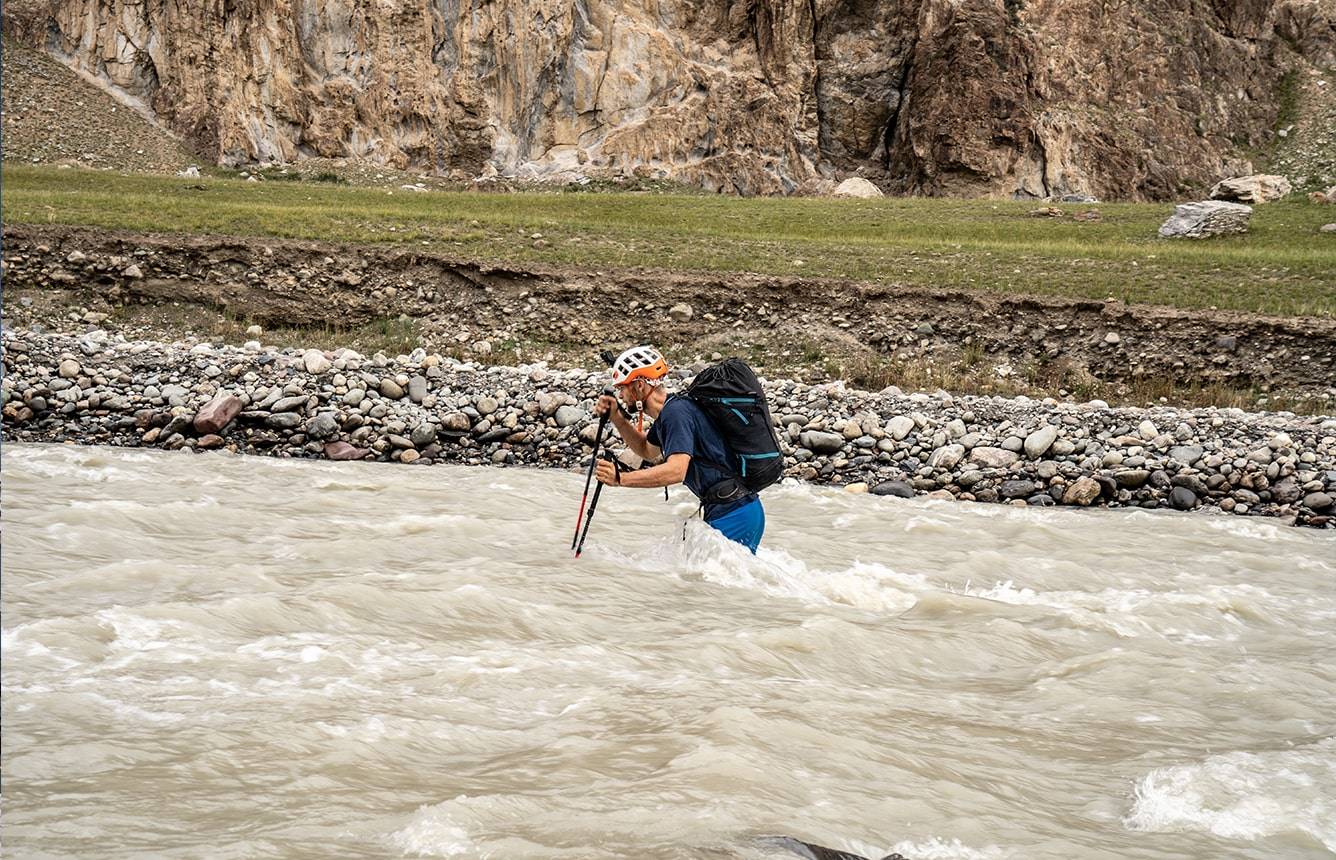
DAY 13
This was our final opportunity to head up to advanced base camp and secure another climb. The weather had improved, so all six of us left early for the long walk in.
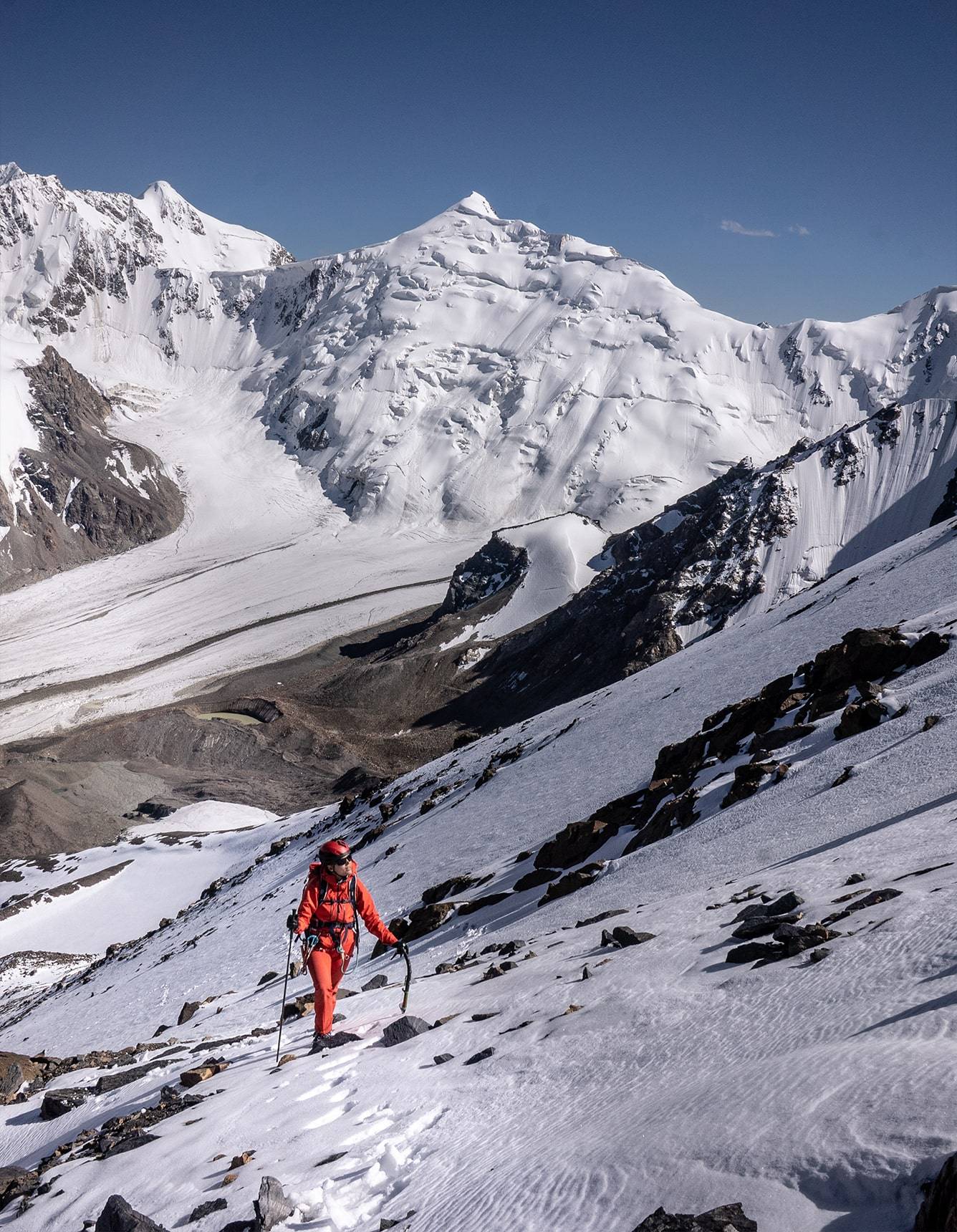


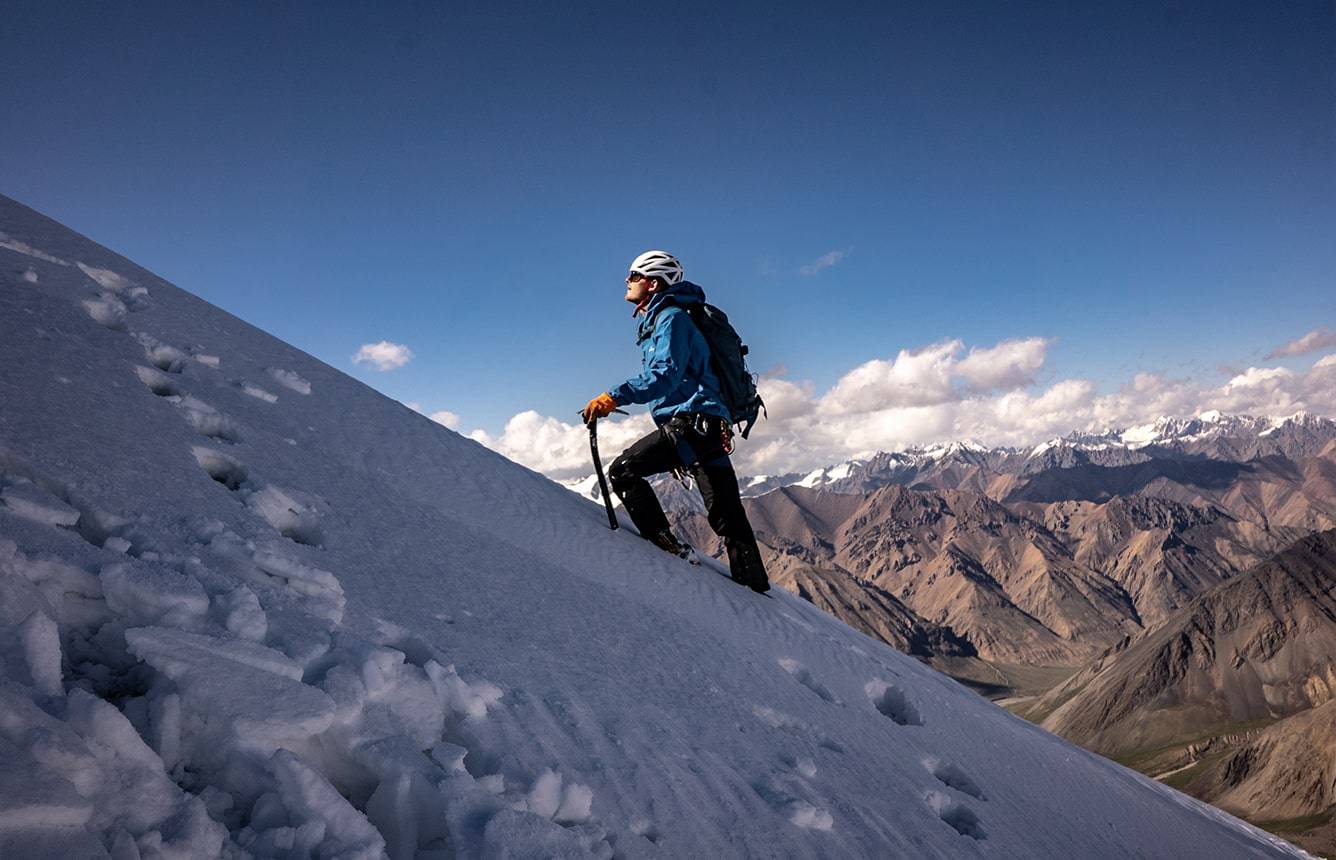
DAY 14
Ewa and I would climb together alongside Joe and Will. Leaving at 2.30am we gained the glacier. The icy amphitheatre ahead was illuminated by the moonlight and at the back, our couloir awaited. Biding our time at base camp and waiting for good conditions seemed to have paid off as the couloir was in perfect condition. We cruised up the left hand side, simul-climbing while protecting ourselves with running gear placements in the sturdy granite to our side. On topping out we were greeted by the sun and a new playground of opportunities as we looked across the plateau. Unfortunately, a lot of the recent snowfall had been trapped here and we waded slowly for the next hour until the 5,000m summit came into view.
The mountain was complicated, with seracs and cornices hindering the easiest access on the west ridge and a rock band blocking the east. The clock was ticking and we didn’t want to be climbing that sort of terrain during the midday heat. We split off into two teams again: Ewa and Will to climb another unsummitted 4,900m mountain to the west while Joe and I would attempt a route up to the ridgeline of our current objective and judge it from there.

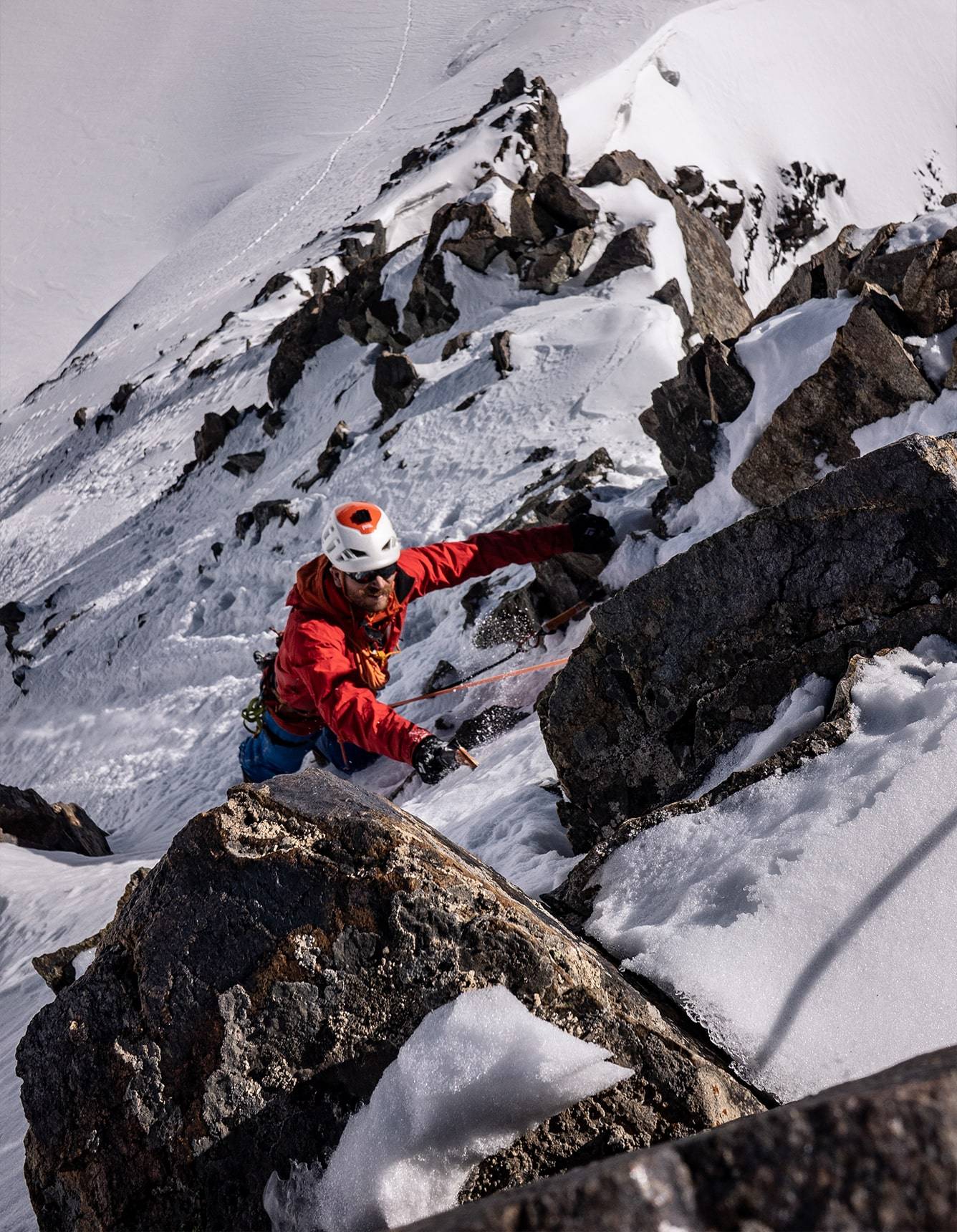
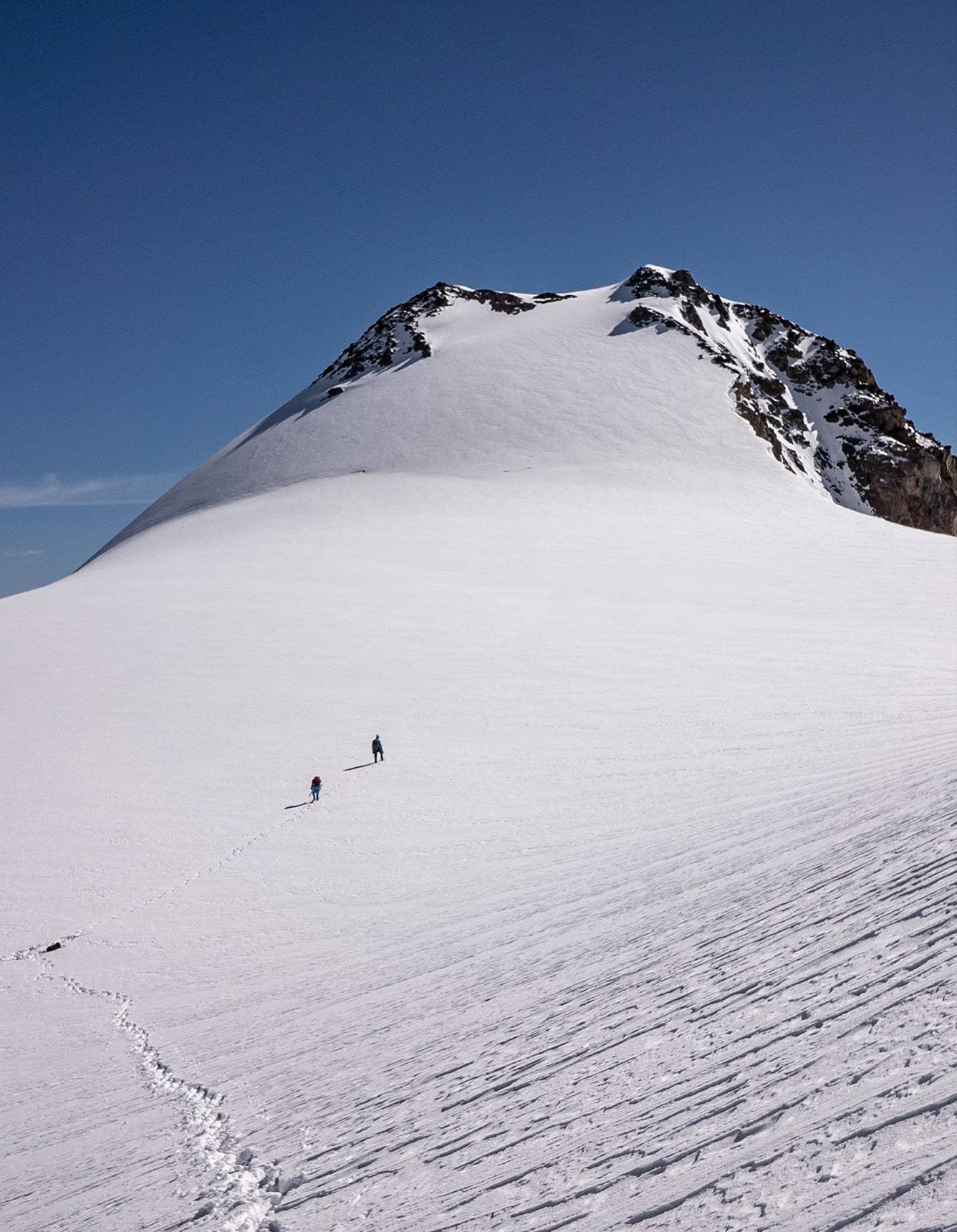
A few weeks before this expedition I had attempted climbing the north face of the Matterhorn. We bailed two-thirds of the way up due to bad conditions on the face, but these sort of experiences put me in good stead for climbing similar mixed terrain. I lead a pitch of 50-degree frozen snow before traversing into a steep mixed gully. I was in my element. Enjoying the moves of ice and rock, torqueing my axe in cracks and placing my crampon points precisely on small edges of rock. I felt comfortable at this grade, where before I might have been at my limit, not enjoying the moment. So enjoyable was it, I hoped it would never end. But it soon did. As I belly-flopped over a cornice onto wet deep snow, I looked further up the ridge and knew it wouldn’t be safe to continue. Joe climbed up to me enjoying the moves as much as I had, and we both made the decision to retreat and meet the other two now waiting on the plateau.
With hindsight, it was difficult not to regret missing out on our summit and to second-guess our decision to turn around. I would find myself thinking that maybe I should have just continued. But I try to make days on the mountain more about the experience than the objective. That way unaccomplished goals don’t diminish the day as much. It becomes more about the people you climbed with, the conversations you had, and in our case, the overall team accomplishments. For that reason I am so proud of Ewa gaining another unsummitted peak with Will.
We started the long abseil back down the couloir knowing this would be our last day at altitude. The Kazmat would arrive in the next few days, crossing the river once again before driving us back to Karakol.

DAY 16
We drove away from base camp leaving no trace behind. We had spent the last two weeks together with people we had never met before – a group of different personalities climbing together in the remote mountains of the Tien Shan. The success of the trip was testament to how well the team worked together. Seven first ascents of 4,000m peaks, one first ascent of a 5,000m peak and four second ascents. But the success of the expedition wasn’t just measured by the ascents; it was also the decision making, the planning and the relationships we built.
Tim Howell is a member of the Jöttnar Pro Team. Find out more here.